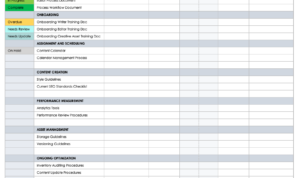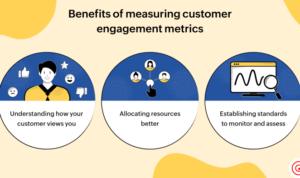Writing Persuasive CTAs sets the stage for boosting conversions with style and flair, diving deep into the art of crafting compelling calls to action that resonate with your audience.
Introduction to Writing Persuasive CTAs
CTAs, or Call-To-Actions, are crucial elements in marketing that prompt the audience to take a specific action, such as making a purchase, signing up for a newsletter, or requesting more information.
Persuasive CTAs play a significant role in driving conversions by compelling users to engage with the content or offering presented to them. They create a sense of urgency or interest that motivates individuals to act, ultimately leading to a higher conversion rate.
Examples of Effective CTAs
- An e-commerce website showcasing a limited-time offer with a CTA button saying “Shop Now and Save 50%!”
- A blog post encouraging readers to subscribe to a weekly newsletter for exclusive tips and updates with a CTA saying “Join Our Community Today!”
- A social media ad prompting users to download a free e-book by clicking on a CTA that says “Learn More and Get Your Copy Now!”
Understanding Your Audience

When it comes to crafting effective CTAs, understanding your audience is key. You need to know who they are, what they like, and what motivates them in order to create compelling calls to action that will resonate with them.
To optimize your CTAs, consider the following tips for conducting audience research:
Tips for Audience Research
- Utilize analytics tools to gather data on your website visitors, such as demographics, interests, and behavior patterns.
- Engage with your audience through surveys, interviews, or social media interactions to understand their needs and preferences.
- Monitor feedback and comments to identify common pain points or desires among your audience.
- Study competitors and industry trends to stay informed about what appeals to your target audience.
Tailoring your CTAs based on audience demographics and preferences is crucial for driving conversions. Here’s how you can do it:
Tailoring CTAs for Different Audiences
- Create personalized CTAs that speak directly to different segments of your audience based on their interests or past interactions with your brand.
- Adjust the tone and language of your CTAs to match the preferences of different demographic groups, such as age, gender, or location.
- A/B test different CTAs to see which ones resonate best with specific audience segments and optimize accordingly.
- Consider the stage of the buyer’s journey your audience is in when crafting CTAs, whether it’s awareness, consideration, or decision-making.
Crafting Compelling CTAs: Writing Persuasive CTAs
When it comes to crafting compelling CTAs, there are several key elements that can make your call-to-action stand out and drive action. Action-oriented language, clarity, and a sense of urgency are essential components of a persuasive CTA.
Action-Oriented Language
Using powerful action verbs in your CTAs can make a big difference in motivating your audience to take the desired action. Here are some examples of strong action verbs you can use in your CTAs:
- Shop now
- Learn more
- Subscribe
- Download
- Get started
- Join us
Clarity and Urgency, Writing Persuasive CTAs
In addition to action-oriented language, it’s important to ensure that your CTA is clear and conveys a sense of urgency. Clearly state what action you want your audience to take and why they should take it now. Use words like “limited time offer,” “act fast,” or “don’t miss out” to create a sense of urgency and encourage immediate action.
Best Practices for Visually Appealing CTAs
Creating visually appealing CTAs can help draw attention to your call-to-action and increase engagement. Some best practices for designing visually appealing CTAs include:
- Use contrasting colors to make your CTA stand out
- Include compelling images or icons to grab attention
- Keep the design simple and uncluttered for easy readability
- Make sure the CTA button is easily clickable on both desktop and mobile devices
A/B Testing CTAs

A/B testing in the context of CTAs involves creating two different versions of a call-to-action and testing them to see which one performs better in terms of driving conversions. This process allows marketers to gather data and insights on what resonates best with their audience, leading to more effective CTAs.
Importance of Testing Different Variations
When it comes to CTAs, small changes can make a big impact on conversion rates. By testing different variations, such as changing the text, color, placement, or design of a CTA, marketers can determine which elements are most persuasive to their audience. This data-driven approach helps optimize CTAs for maximum results.
- Testing different wording to see which message resonates best with your audience.
- Experimenting with various colors and designs to grab attention and encourage action.
- Trying out different placements on your website or email campaigns to find the most effective location for your CTAs.
Analyzing A/B Test Results and Optimizing CTAs
After running A/B tests on CTAs, it’s crucial to analyze the results to understand which version performed better and why. By looking at metrics such as click-through rates, conversion rates, and bounce rates, marketers can draw insights on what elements contributed to the success or failure of a CTA. Based on this data, optimizations can be made to further improve the performance of CTAs.
Remember, A/B testing is an ongoing process that requires continuous monitoring and tweaking to ensure your CTAs are always performing at their best.





